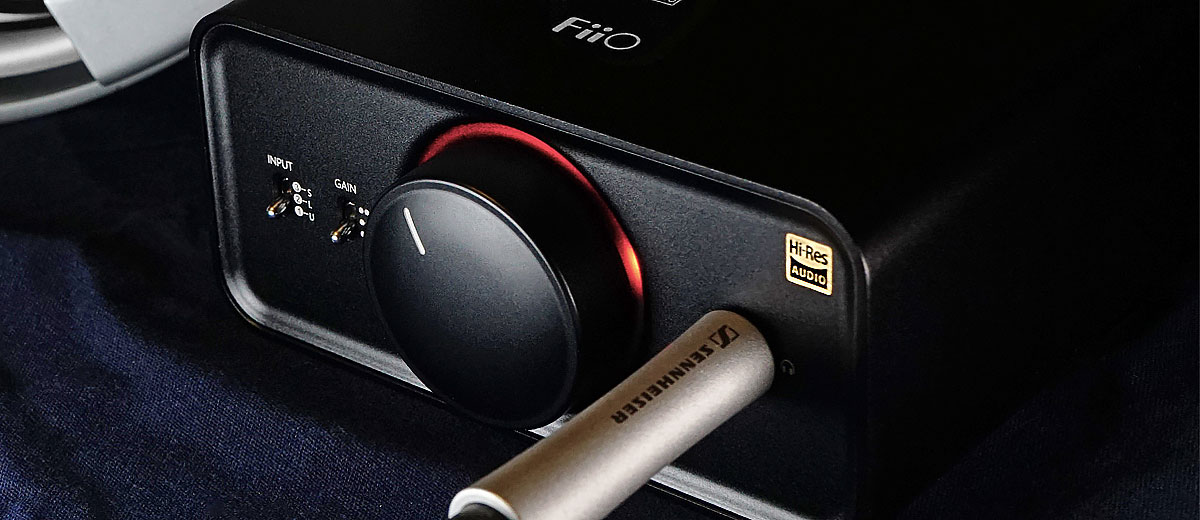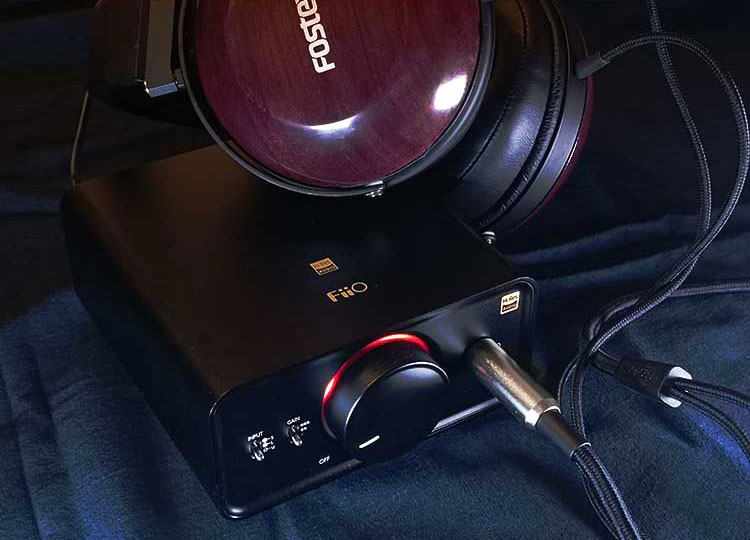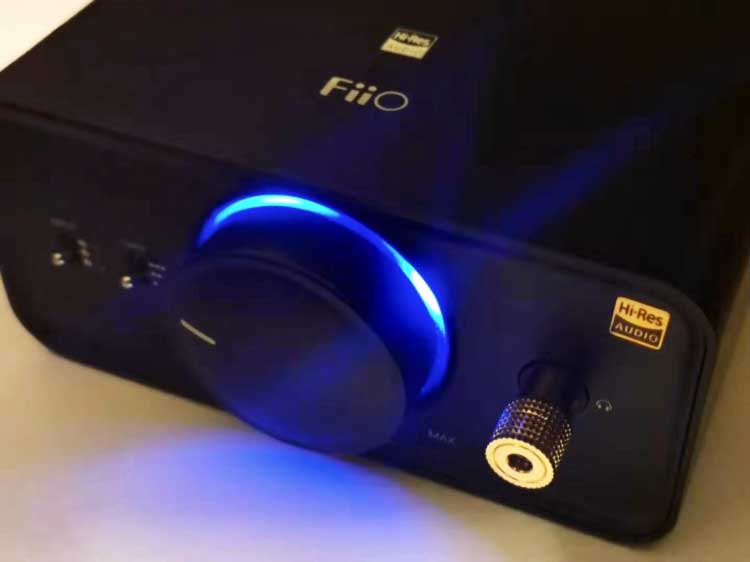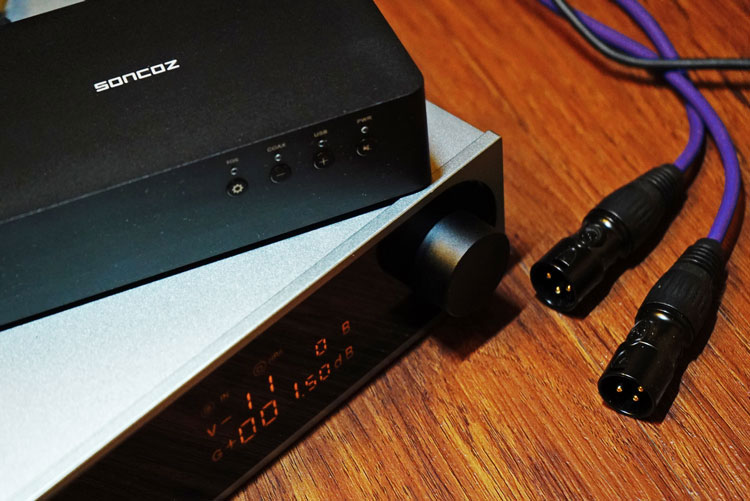Synergy
Efficiency
On low and mid-gain there is little to no hissing heard. The higher gain factors can make IEMs sound very loud but more dynamic, especially for dynamic drivers with a higher impedance rating.
You can still hear good details and dynamics when boosting the volume to a high level. The distortion control is excellent even when cranking up the volume, which works well for headphones like HD600 that requires more power.
It is worthy to note that even at the lowest gain the dynamics are great on IEMs, sounding neither flat nor compressed.
Power
The K5PRO ESS is one of the most powerful devices in its price range and you can feel its 1.5V raw power out of the box using it as an amplifier. For most IEMs I have tested I end up using the lowest gain option but you can try giving some dynamic IEMs using the middle gain option, which will make it sound cleaner and sharper.
The K5PRO ESS is very capable in this regard and good control comes using its high output power. Also, the output impedance is low enough to allow pairing with sensitive gears without any potential for impedance skew.
Pairings
Stress testing the K5PRO ESS using the Sennheiser HD800 that requires plenty of grunt to get going, the K5PRO ESS can handle the job well. There seems to be a satisfactory level of current to let the HD800 sound punchy and firm in the mid-lows.
At a higher gain level, the distortion control is excellent for the price. The vocal imaging as well as the definition of instruments holds up nicely without being smoothened out. The amp is fast enough to handle some fast and strong voltage swings.
I also managed to test it with a friend’s pair of HD6xx and that makes a really good pairing together with plenty of energy in the mid-lows, an expanded stage, and good clarity.
For IEMs, very sensitive ones like the SE846 or the HUM Dolores sound very clean and smooth in the midrange, it doesn’t get overly sharp and still manage to capture some good transients and bass energy, I am sure some of you may like its analytical approach but for myself, I am boosting the mid-lows.
Select Comparisons
FiiO K5PRO
$149
Technical
One key change from the K5PRO to the ESS version is the discontinued AKM AK4493 chipset is now replaced by a Sabre ES9038Q2M. The microcontroller is also changed from the STM 8S003F3U6 to UM8005, which we have seen on the K3 that also packs in an ESS DAC.
All these changes bring upon welcoming enhancements on paper, and we can see the USB IN/SPDIF IN output power rating jumping from 6.3V/1.227W to 6.8V/ 1.442W, while the line-in connection achieves as much as 6.93V swings.
Another remarkable improvement on the ESS version is the distortion control, which is lowered by 50-70% with different connection methods, and with a 3dB boost in dynamic range over the original K5PRO.
Design
The K5PRO ESS looks exactly the same as the original non-ESS version if you neglect the small logo on top. That is not necessarily a bad thing since the old design is very rugged and my older K5PRO is in the family room performing just fine over years. With an external power supply, the design doesn’t get hot so even with no heat dissipation hole it seems to be fine.
Unplugging the power cords and holding the two devices to compare the weight, you can feel the K5PRO ESS being heftier, the reason is not explained nor I could find out the reason from the look, but it is always welcoming when the newer iteration feels more solid.
Performance
While the specs supersede the former generation, the actual performance is always about the implementation. Testing on a USB connection both devices sound very powerful and clean, it feels almost identical in terms of power but the newer ESS version is defining the vocal in a different way.
Testing on Coaxial connection, both device yields a slightly more polished and rounded signature, which I would recommend DAP users to try if they are supplied with a Coaxial connection cable.
This offers an alternative tuning to the USB connection that is sweeter and fuller in the low end.
Soncoz SGA1
$649.99
Technical
There are some areas that stand out despite the price gap with the K5PRO ESS offering as much value as the SGA1 so that’s why I am trying to put these two together to show its capability.
The Soncoz SGA1 measures 7.8Vrms on a balanced connection and 4.0Vrms on single-end output. The single-end connected only K5PRO ESS goes higher at 6.9Vrms compared to the SGA1 SE, and is quite close to its balanced rating. The K5PRO ESS actually feels more powerful with 3.5/6.3mm headphones.
When you look into the actual output power, Soncoz SGA1 offers up to 420mW @33Ω and the K5PRO ESS goes up to 1500mW @32Ω, which may explain its stronger output in actual listening tests.
With a higher load, you will realize the K5PRO ESS is more optimized for lower impedance gears as its output on a 300Ω load falls to 170mW, while the SGA1 scores 210 on single-ended and nearly 5 times on balanced output.
Output impedance and noise control, on the other hand, is as low as 0.1 ohm and 1.8uVrms on the SGA1, compared to K5PRO ESS’s satisfactory <1.2Ω OI and < 4uV noise on low gain.
Design
The Soncoz SGA1 comes in a fancier enclosure roughly twice as large in dimension, with fine steps of gain and volume control. Of course, a balanced connection is there which is not supported on the K5PRO ESS.
The actual experience is quite different as you will need to turn the volume a few more times on the SGA1 compared to the more aggressive K5PRO ESS which can hit a full volume range within one turn. You could argue the FiiO implementation is more intuitive but less precise.
For casual listening, the L/M/H gain toggle on the K5PRO ESS also allows easier access than SGA1’s dedicated, fine steps that have to be navigated in the menu.
Strictly speaking, the SGA1 is offering more finesse and flexibility, yet if you just want some casual listening, the controls on K5PRO ESS comes in handy and is perfectly balanced in both channel at a low volume like the SGA1.
Performance
With the Fostex TH900 that is 25Ω only when connected to the single-ended output of K5PRO ESS and the Soncoz SGA1, I am quite surprised to find the overall performance being quite close on these two machines.
The SGA1 is more detailed in the bass and more controlled in the upper mids, with the mid-lows well-polished and with good density. The K5PRO ESS, on the other hand, is more dynamic and punchy with more air. Also, you can hear its effort in extracting more clarity in the upper mids, giving the vocal more definition.
When it comes to higher loads headphones like the DT990 600Ωversion, the K5PRO ESS can still deliver fair power but is no match to the SGA1 that sounds fuller, more detailed, and dynamic on its balanced output.
The K5PRO ESS delivers great performance with smaller loads and it works well with various studio cans like HD600, K701, and common IEMs. However, when the impedance gets higher it may not deliver a strong a current as compared to the SGA1. Especially with a balanced configuration that induces big differences in power.
Our Verdict
The K5PRO ESS lives up to its potential inherited from the K5PRO and is a powerful hub for the PC with a decent value proposition. There is best-in-class power for the price and the gain option works just fine for IEMs and cans that require more juice.
If you need more features like Bluetooth connection you could add the BTA30PRO or check the K9 Pro but if a minimalistic and versatile design with great power on the desktop or connects to your DAP is what you need, then the K5PRO ESS is a solid start.
FiiO K5PRO ESS Specifications
- DAC chip ES9038Q2M
- Decoding chip XMOS XUF208
- Output power >1.5W 32Ohms
- Output impedance 1.2Ohms (PO)
- THD+N <0.0009% (UAC IN/SPDIF)
- Noise floor <8uV (A Weighted)
- SNR >118dB
- Channel Separation >80dB (USB DAC/OPT/COX)
- Outputs RCA/6.35mm
- Inputs USB-B/OPT/COAX/RCA
- DSD 64/128/256/512 decoding
- Weight about 480g
- Dimensions 120 x 146.5 x 55mm






